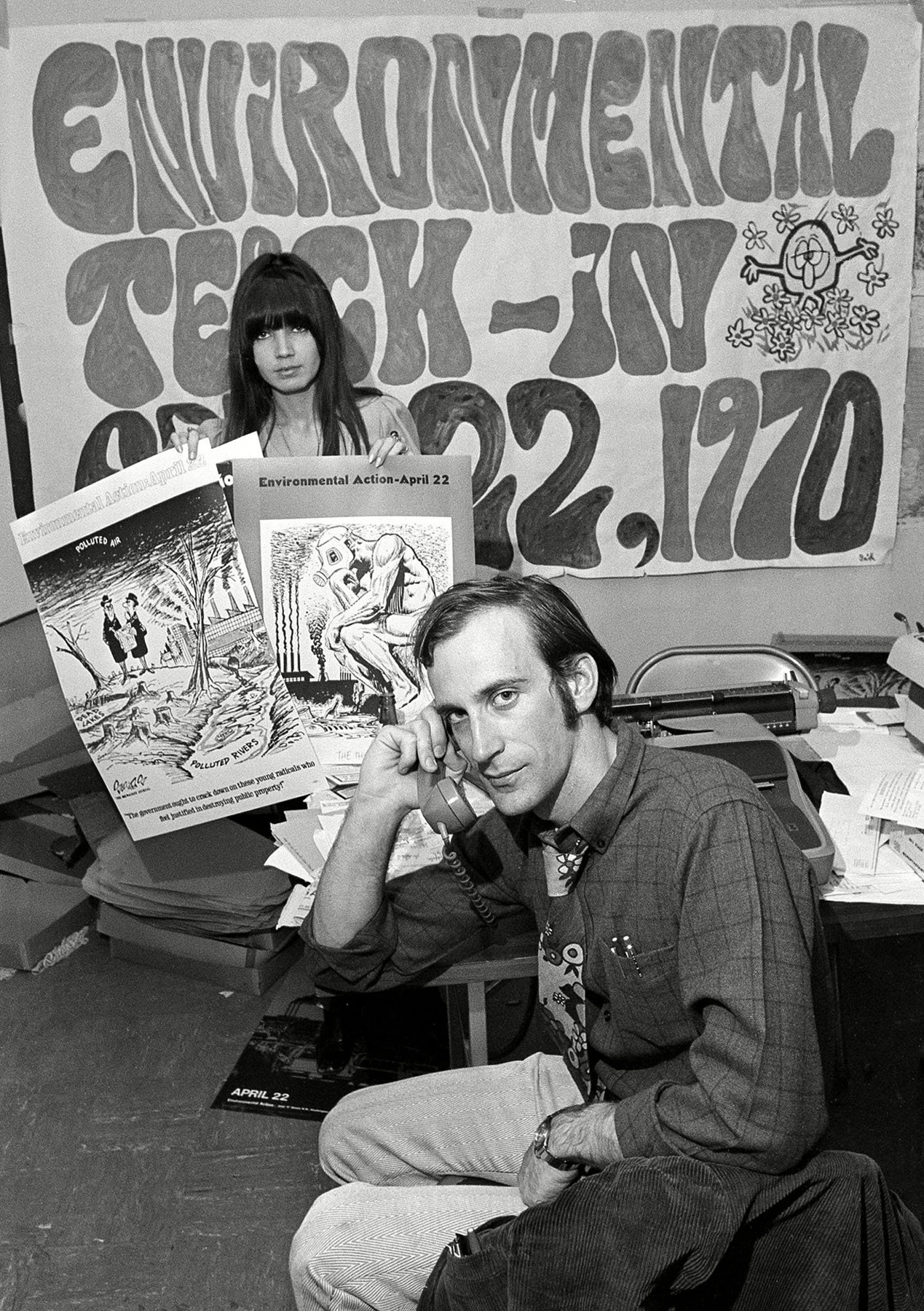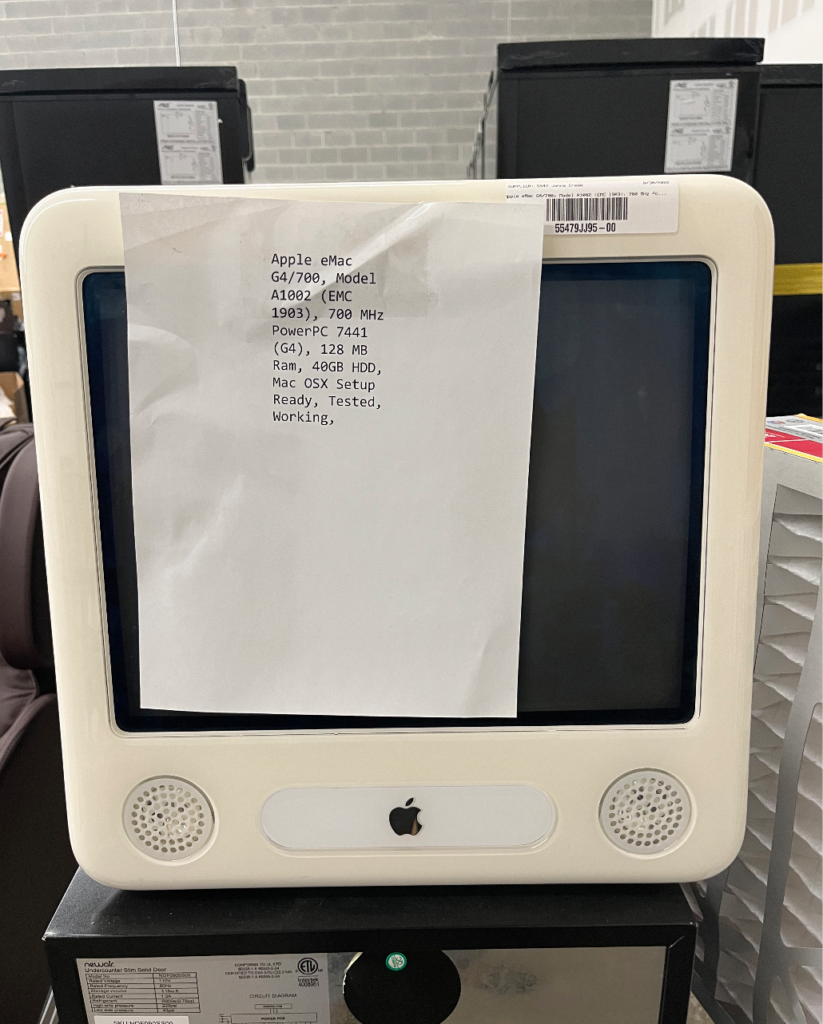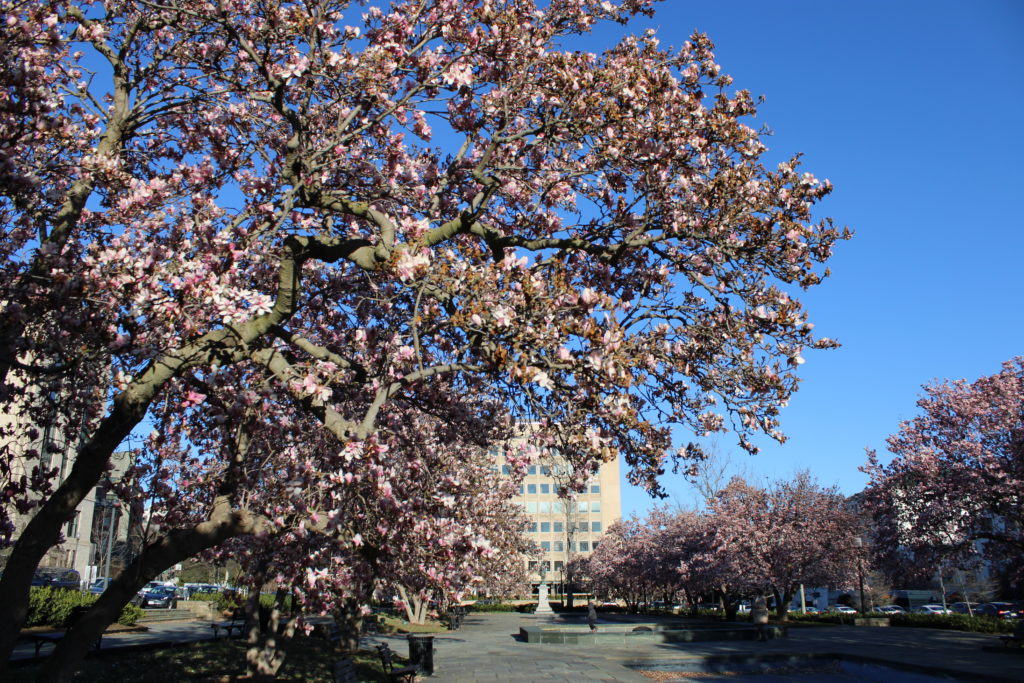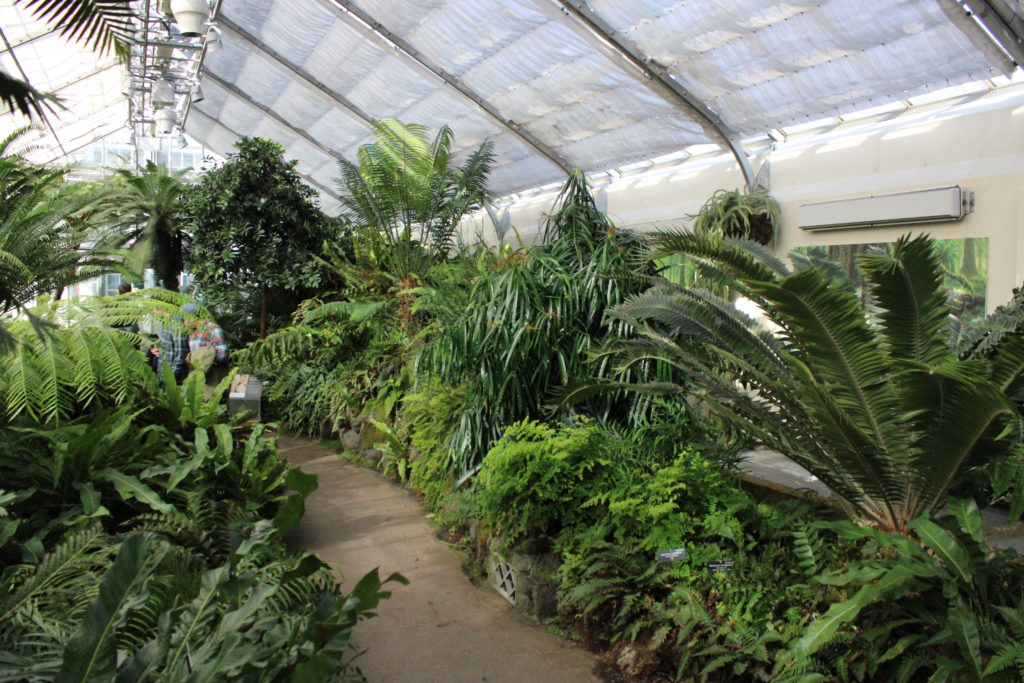The History of Earth Day
Written by: Rashawn Khamari Merchant
On the tail-end of the Vietnam War, the Civil Rights Movement, and the Space Race, there began to grow a movement regarding the planet and its health. People realized that waste was everywhere and the world was no longer invincible. In 1970, a junior Wisconsin Senator came to see a vision for change, and on April 22nd of that year, the first Earth Day was established.

CWH/AP/Shutterstock
During the 1960s, corporations could dump waste into streams and let off mass amounts of smoke with no legal consequence. At the time, there didn’t exist a clean air or water act, so there were no standards as to how companies should act with the environment in mind. Many around the country were beginning to notice the harmful health hazards piling up.
Someone, in particular, was Rachel Carson, who, in her 1962 book Silent Spring, was able to document how the excessive use of pesticides was damaging wildlife populations. Carson’s book was a catalyst and gained considerable attention for other instances. Later on, in 1969, Senator Gaylord Nelson announced a series of teach-ins to educate college youth on environmental concerns. Senator Nelson began at Stanford using the energy from anti-war protests and gained national media attention. One of the largest teach-ins occurred on April 22nd, a weekday between final exams and spring break garnering massive student participation.

Bettman Archive/Getty Images
The first Earth Day sparked an achievement that involved all people across the United States. More than 20 million Americans participated that year, and things changed forever.
As of today, Earth Day is the world’s most celebrated event inviting people everywhere to honor the planet and commit to healthier changes. In this climate change era, people will continue making strides. Saving the world is our responsibility and will remain in our consciousness.
10 Facts About the Environment
1. We have explored less than 5 percent of the ocean
The oceans on Earth are so vast and deep that we humans haven’t explored more than five percent of them. Much of the sea floor cannot be explored due to the depth being so vast, radio waves themselves cannot penetrate.
2. Ants weigh more than humans
The combined weight of ants on the planet is higher than all human beings. The world has over 7 billion people, and 100 trillion ants.
3. Aluminum can be recycled indefinitely
Recycling one soda can will save enough energy to power a tv for three hours.
4. The ozone layer will be fully healed by 2069
The UN’s Environment Agency (UNEP) has declared that the ozone layer, the planet’s protective shield of gas, is on track to heal completely in our lifetime. This is due to the worldwide banning of chlorofluorocarbons and hydrofluorocarbons.
5. There are about 27 oil spills daily, somewhere in the world
The sad part about this is that about 5 million tons of all the oil produced every year, end up in the oceans, killing millions of marine animals.
6. 25% of the bottled water you buy is municipal tap water
You might as well pass on the plastic bottle.
7. Invest in Our Planet
This year’s Earth Day theme is focused on engaging governments, institutions, businesses, and the more than 1 billion citizens who participate annually in Earth Day.
8. The world’s indigenous protection
Indigenous populations make up just 5% of the global population yet protects 80% of global biodiversity.
9. Say no to bags when you go shopping
A plastic bag is used for an average of 12 minutes but will remain in the environment for 1,000 years before it decomposes.
10. Agriculture uses up 70% of our global freshwater
It goes up to 90% in fast-developing countries.
Downfall with an Uptrend in Technology
Written by: Alejandro Pineda Catalan

AP
Technology has seen massive leaps and bounds, affecting sectors outside its own. These sectors include media, climate change, and healthcare. To look at how technology has created environmental change, we must understand what negative impacts big tech companies have created. The more anything grows, it is bound to create adverse outcomes, no matter the unlimited benefits it can create. Most technology lacks sustainable materials; these materials often come from minerals that have severe consequences when obtaining them.
Mining is essential in collecting the minerals required to make most devices we use today, such as smartphones, speakers, laptops, and other standard devices. Mining can result in deforestation and water pollution and release carbon dioxide, carbon monoxide, and other toxic gasses into the air. The machinery, another result of “technological improvements,” has not evolved to where it can use green energy but still operates off fossil fuels.

Ladislav Kubeš/Istock
These types of machinery play a significant role in greenhouse gas emissions. The most hindering results pour onto the people within these mining camps, considered modern-day enslaved people. These people who live in undeveloped countries suffer from back-breaking manual labor and work conditions that leave many with severe health conditions, many resulting in death.
The cycle of producing these devices continues; materials are shipped and produced in warehouses requiring massive amounts of energy. Shipping again contributes to our carbon footprint and energy usage for those massive manufacturers who take these minerals and materials to create the complex devices we all know and love. Once these devices are used and useless to the customer, they become waste. Not any ordinary waste, but “E-Waste,” which totals 62.5 billion dollars worth of electronics.
Electronic waste results in even more environmental pollution and contamination that leak into waterways. Landfill sites can result in more than land waste. While the waste can sit and take up space, it is also often burned, emitting methane and other carbon emissions. The location for all this waste also returns to undeveloped countries. “Out of sight, out of mind” can be the slogan for most prominent tech companies, ensuring the masses do not see the negative handoffs to keep producing and making billions each year.
Electrical waste is at a historical high as big tech companies can produce their products overseas at an inexpensive cost compared to what it would cost within the states or any developed country. Outsourcing in the technology sector has pronouncedly impacted a company’s profitability. It also impacts where specific jobs are and how those jobs can affect the people and environment around them. Undeveloped countries become victims of outsourcing and create economic and environmental issues.
Unofficially recycled electronics expose individuals to dangerous working conditions and adverse health concerns. Being so cost-efficient to outsource, it has become a norm for tech companies to worry less about what it takes to produce these said products. Their primary focus is how to keep costs low and market their products to the public while dismissing their obstructive practices.

Alejandro Pineda/Earth Shiners
Where there are problems, there are also opportunities for the solution of these problems. Recycling is still a vital action humanity must implement, only partially waste certain electronics. Once recycled, the materials that hold expensive minerals within them can reduce the need for mining camps that endanger those who work within them and live around these locations. We also must make it aware that most electrical products are not sustainable nor as disposable as many think. The public should be aware of how harmful our everyday devices are to manufacture.
Having more information on the process and afterlife of the devices we take for granted may allow us to become mindful of how much hard work it takes to obtain them. Another aspect to look into is making electronics last longer or more disposable. Making devices have a longer use life can reduce the amount produced. Also, making these devices more disposable and less harmful when discarded can result in less environmental harm.
Government regulations have also begun to appear as tech companies have seen much profit in the last decade. Regulations can have a more sustainable process and even create more jobs that are always needed. Changes can minimize the negative impacts big tech companies have created over the years. As much as the blame can be shared, these technology companies must want to change themselves. They can solve their problems and even benefit from creating solutions.
The Government’s Role in Protecting Nature
Written by: Rashawn Khamari Merchant

Rashawn Merchant/Earth Shiners
The Environmental Protection Agency (EPA) serves as the gold standard for what we consider to be the government’s role in protecting nature. The agency is often called upon (and blamed) when environmental disasters strike. The government plays an essential part in conserving our country’s natural spaces, and as a people, we trust them to protect us from related health hazards. There’s a deep history between the government’s role and its modern influence, and much of it begins in the early 20th century.

Rashawn Merchant/Earth Shiners
Following the Great Depression and World War 1, America was in deep economic despair. Many were still out of work or returning from the war with skilled hands but needed opportunities to utilize them. President Franklin Delano Roosevelt saw this as a chance to rebuild the nation through labor projects from coast to coast. In 1933, he signed Executive Order 6101, which created the Civilian Conservation Corps (CCC). As a result, while mostly white, 3 million men joined the CCC and made efforts to plant over a billion trees, construct 13,000 miles of hiking trails, and develop 800 new parks. For about ten years, the government had a profound hand in restructuring our natural resources. Since then, it has been vital in protecting America’s landscapes.
Further on, into the 1970s, the EPA was created. After a robust economic and infrastructural growth period, emissions rose at astronomical rates. Cars and factories had little to no regulations, and there was a nationwide spread of respiratory sickness due to air pollution.

Rashawn Merchant/Earth Shiners
The U.S. ‘s waterways faced similar detriment as waste dumping into rivers became a popular means of disposal. The Clean Air and Water Acts halted this devastation, and the EPA assisted in federal oversight. Today, one of the protection agencies’ most significant roles is supporting state and local agencies in doing the same. According to the EPA’s mission statement, it works to use funding toward research, protecting human health, and sponsoring partnerships for collaborative efforts amongst community groups.

Rashawn Merchant/Earth Shiners
As we move into what appears to be America’s newest rebuilding phase post-pandemic, the proposed Green New Deal has been something to watch. The Green New Deal is an idea to create an infrastructure incorporating cleaner energy and sustainable materials to improve cities, transportation, and agriculture. Representative Alexandria Ocasio-Cortez
proposed it and continues to push during the Biden Administration. The Green New Deal aims to create jobs while promoting a cleaner America that will provide environmental safety for the future. New infrastructure can reduce carbon emissions which have led to extreme weather events like wildfires and droughts. With the available money and momentum from the Inflation Reduction Act, there’s a possibility to eliminate fossil fuel dependency altogether. The economy needs a new push and one built for the 21st century.
Thanks for reading!
Copyright Earth Shiners Creative LLC 2023
Earthshiners@earthshinersmagazine.com

Leave a Reply